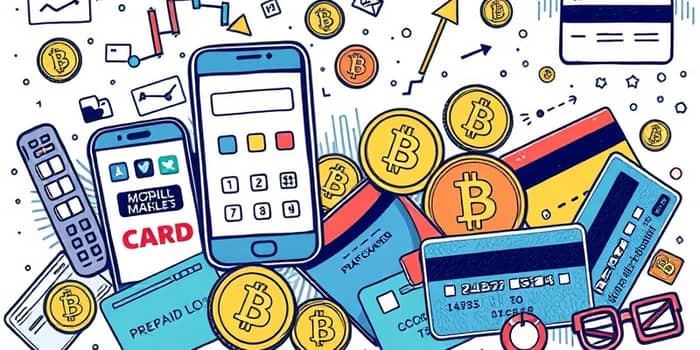
In today’s evolving financial markets, consumers and businesses are seeking more flexibility than traditional banks can offer. Alternative credit products have emerged, catering to diverse needs and profiles.
An alternative credit card departs from the conventional model of a bank-issued, unsecured line of credit. It leverages new technology, unique collateral requirements, or non-traditional issuers to deliver purchasing power and financing.
These solutions range from prepaid instruments to equity-backed credit lines, extending access to those with limited credit history or specific asset profiles.
Traditional credit cards may present obstacles:
Alternative products address these pain points, offering tailored features and inclusive eligibility.
Debit and prepaid cards provide immediate spending of deposited funds. They eliminate debt accumulation but can carry fees.
Prepaid cards often serve unbanked or underbanked populations, requiring no credit check and innovative payment and credit solutions.
Mobile wallets like Apple Pay and Google Pay store card credentials securely, using tokens and biometrics for authentication.
With built-in biometric security and tokenization, these wallets reduce fraud and facilitate instant tap-to-pay transactions at over 85% of U.S. retailers.
BNPL platforms split purchases into short-term installments, often interest-free if paid on time.
Users can access flexible no-interest installment plans, though multiple open BNPL orders can complicate budgets and trigger late fees.
Virtual cards generate single-use or limited-use numbers tied to an existing account. They significantly limit exposure from data breaches.
Merchants never see the actual account number, providing secure one-time virtual card numbers ideal for subscriptions or one-off purchases.
Secured cards require a cash deposit equal to the credit limit, making them accessible to those rebuilding credit. Deposits act as collateral.
Home equity-backed cards extend large credit lines using property equity, which can reach up to $400,000. Borrowers must weigh the risk of losing their home on default.
Both options may report to credit bureaus, helping users cash deposit as credit collateral and restore or establish credit profiles.
Cryptocurrency debit and credit cards convert digital assets into fiat at the point of sale. They offer unique rewards paid in crypto but face volatility and limited liability protections.
Users must navigate fluctuating valuation and regulatory uncertainties in this emerging domain.
Understanding how each product balances cost, protection, and credit reporting is essential.
This overview highlights that no one solution fits all scenarios; consider personal priorities and risk tolerance.
Different consumer profiles align with specific products:
Evaluate factors like spending habits, desired rewards, and credit goals.
The financial industry continues to innovate, integrating AI-driven underwriting, digital identity verification, and blockchain transparency.
rapidly evolving financial technology landscape promises new hybrid products that blur lines between loans, cards, and digital currencies.
By aligning features with personal financial goals, users can make informed decisions and optimize their payment strategies.
Alternative credit cards and payment solutions have expanded options for all types of consumers. From peer-to-peer lending and crypto payments to prepaid and secured credit, each tool offers unique benefits and risks.
Embrace this diversity to discover new pathways to financial empowerment, ensuring that your chosen solution aligns with your lifestyle, budget, and long-term credit ambitions.
References













